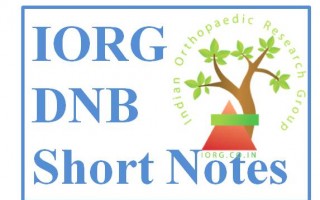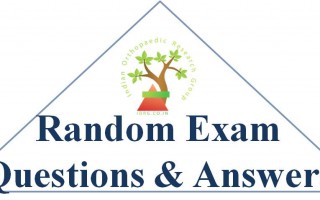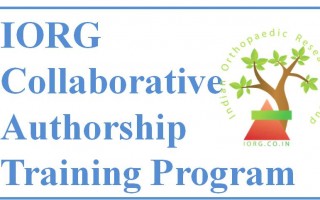June 2008
Paper I
1. Femoro acetabular impingement syndrome.
2. Chronic recurrent multifocal osteomyelitis. Diagnosis and management.
3. Management of Brachial artery injury in association with supracondylar fracture of humerus.
4. Differentiating features between Osteonecrosis and transient migratory osteoporosis.
5. Discuss the diagnosis and clinical features of DVT in orthopedic surgery. Outline the management. What special precautions are required if post-operative epidural analgesia is used for 4 – 5 days.
6. Discuss the approach to a patient with suspected bony metastasis with unknown primary tumor.
7. Enumerate the radiological types of Tuberculosis Hip. How does this classification help us in prognostication?
8. Discuss the approach to a patient of pelvic fracture with a suspected abdominal injury.
9. Enumerate various methods of ACL Reconstruction. Discuss the pros & cons of each method.
10. Bone defects encountered during total knee replacement and their management.
Paper II
1. Discuss the types of equines contracture in cerebral palsy and its management.
2. Describe the Anatomy of iliotibial band and the effect of its contracture on the lower limb. How do you clinically detect the contracture?
3. Renal Osteodystrophy
4. Scheurmans disease.
5. Pathophysiology of claw hand and its treatment.
6. Discuss the management of flexor tendon injury in zone II.
7. Describe the orthotic management of an asensate foot particularly in reference to leprosy.
8. What are the various types of exercises? Discuss the benefits and indications of isometric exercises.
9. What is paraffin wax? How is it useful in treatment of orthopedic conditions? What are the indications and contraindications of wax bath therapy?
10.Define ankle foot orthosis. What are the plastic materials used in fabrication. Describe indications and care during daily use.
Paper III
1. Describe the causes of ulnar wrist pain after healing of a distal radial fracture and discuss the management.
2. Damage control orthopaedics .
3. Classify fractures of acetabulum and role of conventional radiology in the classification
4. Classify ankle injuries. Which fracture patterns have syndesmotic instability & how do you manage it?
5. Classify fractures of the proximal humerus. What is the relevance of blood supply of humerus in planning management? How will you treat four part fractures?
6. Discuss the advances in the management of periarticular fractures.
7. Describe the mechanism of injury & clinical presentation of various incomplete spinal cord syndromes.
8. Differentiating features in the patho Anatomy & management of intracapsular fracture neck of femur in children & adults.
9. Advances in treatment of osteoporotic fractures.
10.Discuss the clinical features & management of Achilles tendinopathy in athletes.
Paper IV
1. Biological therapy in inflammatory arthritis.
2. Trochanteric flip osteotomy in surgical exposures of the hip joint.
3. Rationale for using metallic implants in osteoarticular tuberculosis.
4. Clinical differentiation between pre-ganglionic and postganglionic lesions of brachial plexus & its effect on the management.
5. Transcutaneous nerve stimulation.
6. Define femoral anteversion. How do you detect it clinically? Discuss the role of anteversion in orthopaedics diagnosis & management
7. Pathophysiology of lumbar canal stenosis.
8. What are bisphosphonates? Discuss the role of Bisphosphonates in various orthopedic disorders.
9. Describe the blood supply of a long bone. Discuss the effects of various modalities of internal fixation on the blood supply.
10.Biodegradable orthopedic implants













 India-Orth
India-Orth